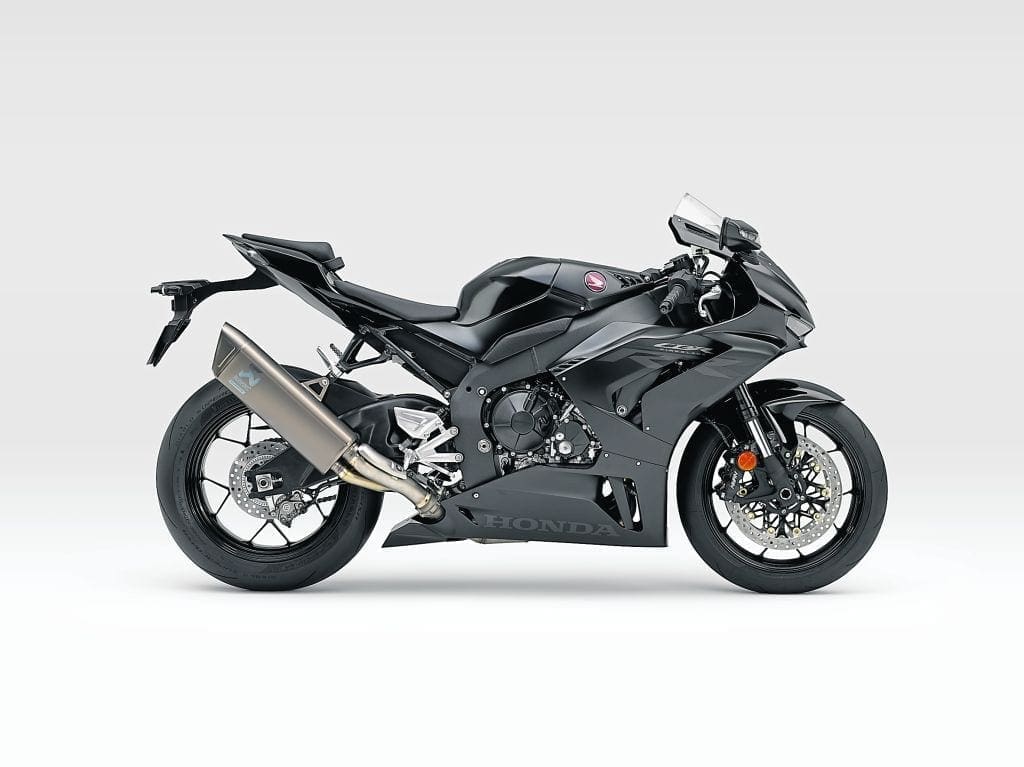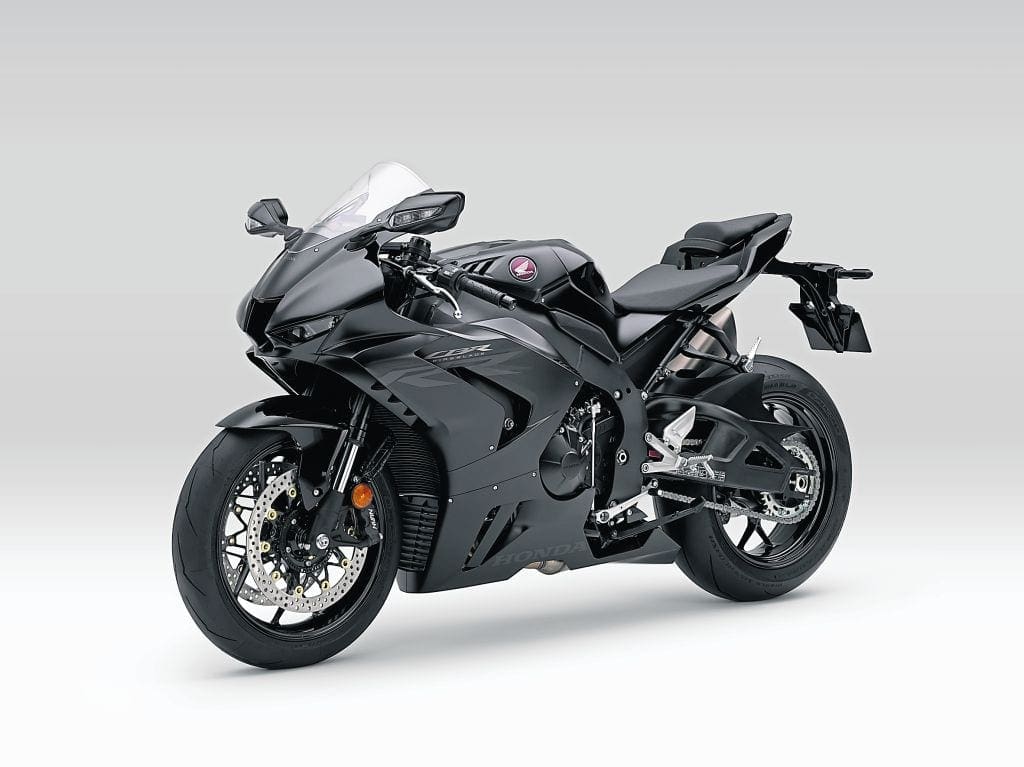
Honda is not being coy about why it’s made this all-new Blade for 2020 – outwardly saying that this is, really, a track bike that’s been built to shine at WSB-winning speeds.
Here is what Yuzuru Ishikawa, Large Project Leader for the new CBR1000RR-R Fireblade said about the bike: “Our intentions are crystal clear. The CBR1000RR-R’s battleground has moved to the race track, where its advanced performance can be most fully demonstrated.
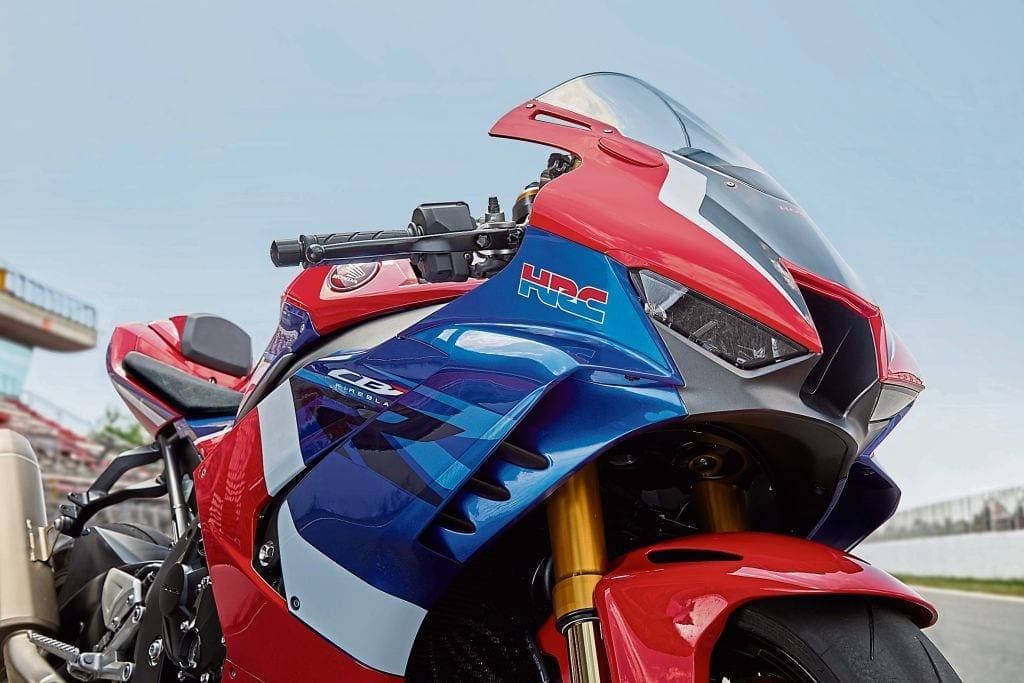
“The engine has the same bore and stroke as the RC213V. We firmly believe riders everywhere can experience a whole new level of performance with our new CBR1000RR-R – a machine in its element on the track.”
Track focused
So there it is, nice and clear that any ideals of the Superblade being a bit of an all-rounder are firmly out of the park.
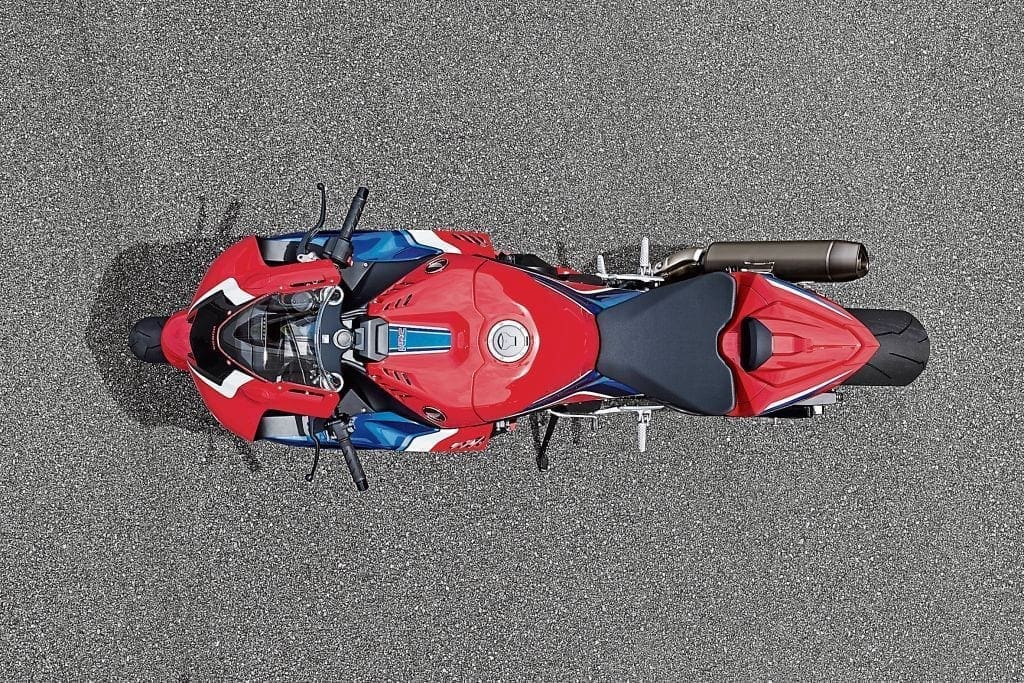
Up close, the snazzily-named CBR1000RR-R (good, if you’re a fan of capital Rs) really is a brand-new motorcycle. The inline four-cylinder engine draws heavily on the RC213V-S’s combustion efficiency and low-friction technologies – while also sharing its bore and stroke. On top of that the motor also features titanium con-rods and forged aluminium pistons.
Honda Selectable Torque Control (HSTC) has been optimised for the new Blade and the firm’s adjustable Start Mode (aka Launch Control) added to Power, Engine Brake and Wheelie Control.

New frame
An aluminium diamond frame features a longer RC213V-S-style swingarm with six-axis Inertial Measurement Unit (IMU) to take care of the motorcycle-position-information that feeds the myriad of onboard computer systems.
To help keep things stable, the new Blade gets 3-level Honda Electronic Steering Damper (HESD) and Showa suspension front and rear (that’s changed to Ohlins Smart Electronic Control suspensions front and rear on the SP version).

New Nissin brake calipers are mated to 330mm discs through 2-level ABS.
The bodywork and riding position are tailored towards aerodynamic performance instead of rideability and comfort and to that end, the fairing features MotoGP-derived winglets to generate downforce. A full-colour TFT screen and Honda Smart Key are also in the new bike’s package.
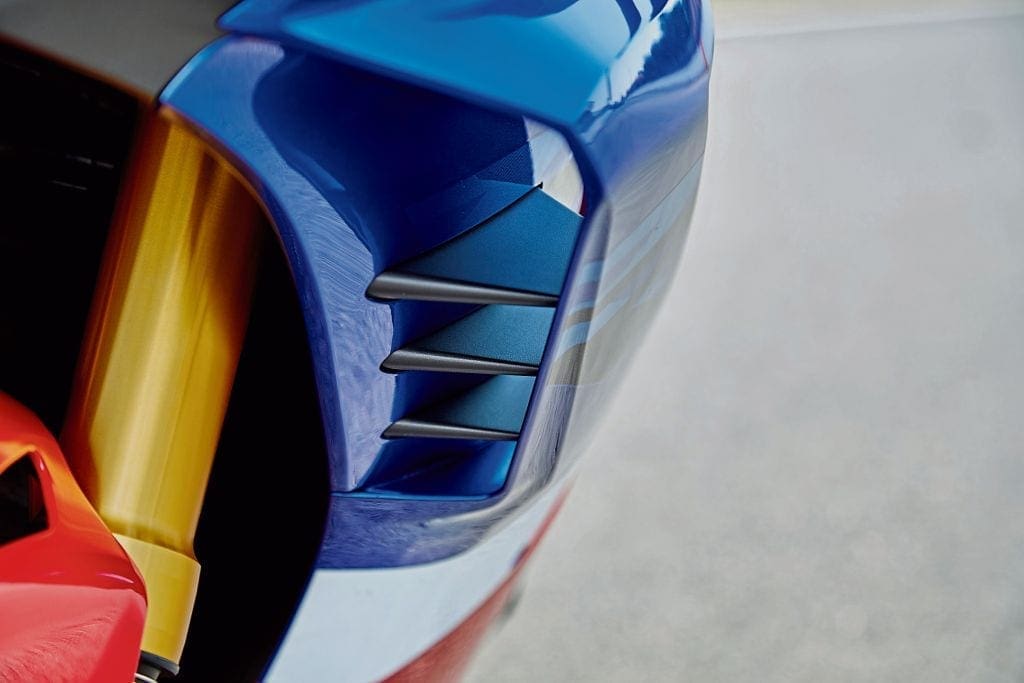
The Aerodynamic cleverness
Honda’s development team was tasked to create a class-leading drag coefficient (with a tucked-in rider under track conditions) and restrict lift under acceleration while improving braking stability.
The first part of the process was to lower the fuel tank cover by 45mm, decreasing the frontal area with the rider prone. At a 35° angle the screen channels airflow from the upper fairing over the rider and seat cowl, which itself presents the minimum possible drag resistance. The left and right upper fairing slits reduce yaw and roll resistance while turning.
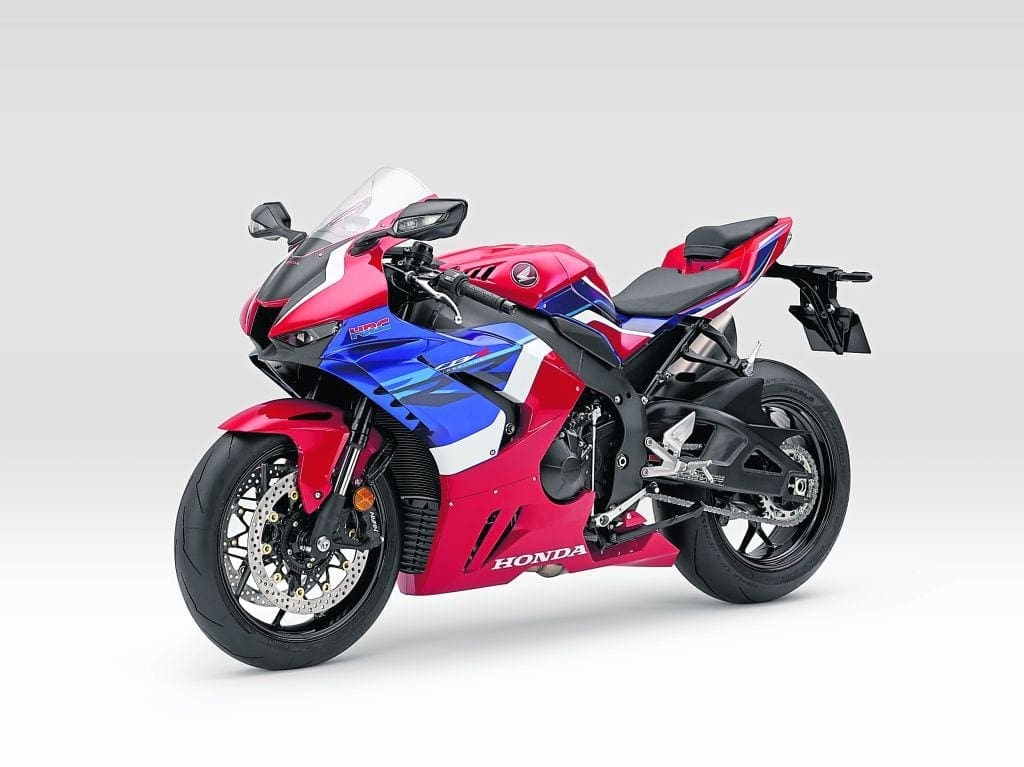
To make steering easier a convex surface on each side of the front mudguard moves air flow away from the front wheel, smoothly directing it to the fairing sides. Cooling air for both the radiator and oil cooler has been optimised by aerodynamic management of both velocity and pressure of air flowing from the tyre.
The lower fairing has also been extended close to the rear tyre, and shaped to channel air downward. This has two effects: in dry conditions, less air hits the tyre, lowering drag; in the wet, less water hits the tyre, improving grip.
Rear lift
To let air flow around the rider’s feet with minimum resistance the sides of the rear hugger are carefully shaped while its upper side is cut-out to vent air that channels up from underneath either side of the swingarm, decreasing rear lift.
The net result of all this work, with the CBR1000RR-R in stock race trim, is a (claimed) best-in-class drag coefficient value of 0.270.
To generate downforce at track speeds – and maintain the smallest possible frontal area – the CBR1000RR-R gets winglets at the front of the main fairing that generates the same downforce as the 2018 RC213V MotoGP machine.
Electrics
For the CBR1000RR-R, TBW has been improved for faster response through a range of part throttle applications – such as gradual opening on corner exit – to minimise any delay in torque delivery.

There are three default riding modes, with options to change engine output and character (see diagram). Power (P) operates through levels 1-5 with 1 giving ultimate outright power. Engine Brake (EB) manages performance on a closed throttle through levels 1-3, with 1 being the strongest engine braking and Wheelie (W) through levels 1-3 (plus off) with 1 the strongest.
Wheelie control uses information gathered by the IMU on the RR-R’s pitch angle, along with front and rear wheel speed sensors to maintain torque and deal with the wheelie without sacrificing drive.
Selectable torque control
Honda Selectable Torque Control (HSTC) adjusts through 9 levels (plus off) with 1 giving weakest intervention. It has been optimised for the RR-R and now adds slip rate control (when the slip change rate based on ratio of front/rear wheel speeds exceeds predetermined values) to moderate rapid wheel spin (see diagram). In conjunction with the existing outright slip control, HSTC is smooth in operation while delivering maximum confidence for the rider.
The CBR1000RR-R is also equipped with Start Mode for race starts. It limits engine rpm at 6,000, 7,000, 8,000 and 9,000rpm set-points, even with a wide-open throttle, letting the rider focus on clutch release (and lights) alone.
ENGINE:
The new inline four-cylinder engine is a compact, short-stroke layout – sharing the bore and stroke of the RC213V-S – and features a semi-cam gear train, finger-follower rocker arms, titanium con-rods, RC213V-S internal friction reduction technologies, piston jets with check ball system and a built-in bottom bypass passage for the cylinder water jacket. The 999.9cc CBR1000RR-R engine makes 214.5 (160kW) @ 14,500rpm and 83lb-ft @ 12,500rpm.
EXHAUST:
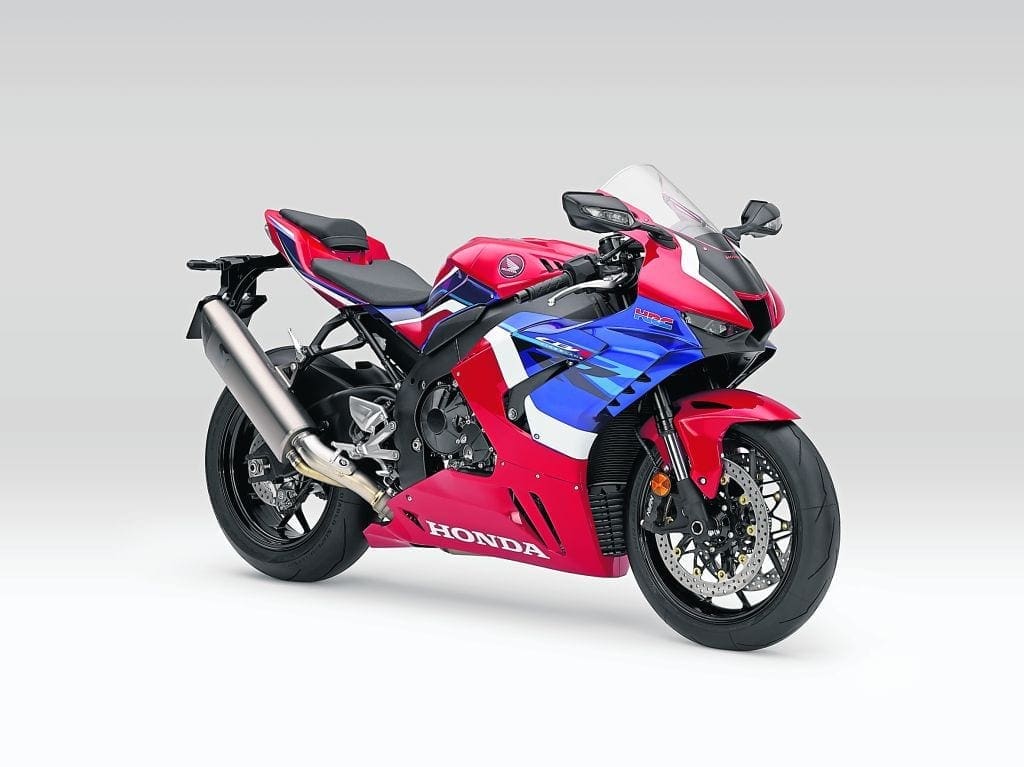
A ram-air duct in the front fairing feeds through the headstock directly into the airbox. The 4-2-1 exhaust downpipes are ovalized and the end-can has been developed in conjunction with Akrapovic.
THROTTLE:
Throttle By Wire has been enhanced for feel and there are three default riding modes feature options to change Power, Engine Braking, Wheelie Control and the optimised Honda Selectable Torque Control (HSTC). The electronics package also now includes adjustable Start Mode (launch control).
FRAME:
A new aluminium diamond frame uses the rear of the engine as the upper shock mount; the swingarm is longer and based on the RC213V-S design.
FRONT END:
Showa’s 43mm Big Piston Fork (BPF) is matched to a Showa Balance Free Rear Cushion Light (BFRC-L). The front discs are larger in diameter and worked by new Nissin four-piston calipers while the ABS is adjustable for track riding.
BRAIN:
A six-axis Inertial Measurement Unit (IMU) provides accurate 3D estimation of riding dynamics and provides input to manage all of the electronic systems. It also controls the new rod-type 3-level Honda Electronic Steering Damper (HESD).
FAIRING:
Honda’s 2018 RC213V MotoGP machine has lent some of its slippery aerodynamics to the CBR1000RR-R, including winglets to increase downforce and improve braking stability. The riding position is also much more compact.
GEOMETRY:
Wheelbase is now 1,453mm, with rake and trail of 24°/101.2mm (from 1405mm, 23°/96mm) for stability. Wet weight is 201kg. The crankshaft is 33mm further from the front wheel spindle and raised 16mm. This evens out weight distribution, while the higher c-of-g improves side-to-side agility and ultimate lean angle.
The swingarm – stamped out from 18 individual thicknesses of aluminium and as used by the RC213V-S – is 30.5mm longer, at 622.7mm, but weighs exactly the same as the previous design. Its horizontal rigidity is reduced by 15%, with vertical rigidity maintained to generate grip and feel.

COLOURS:
The new Honda Fireblade is available in two colourschemes: red, white and blue or black.
